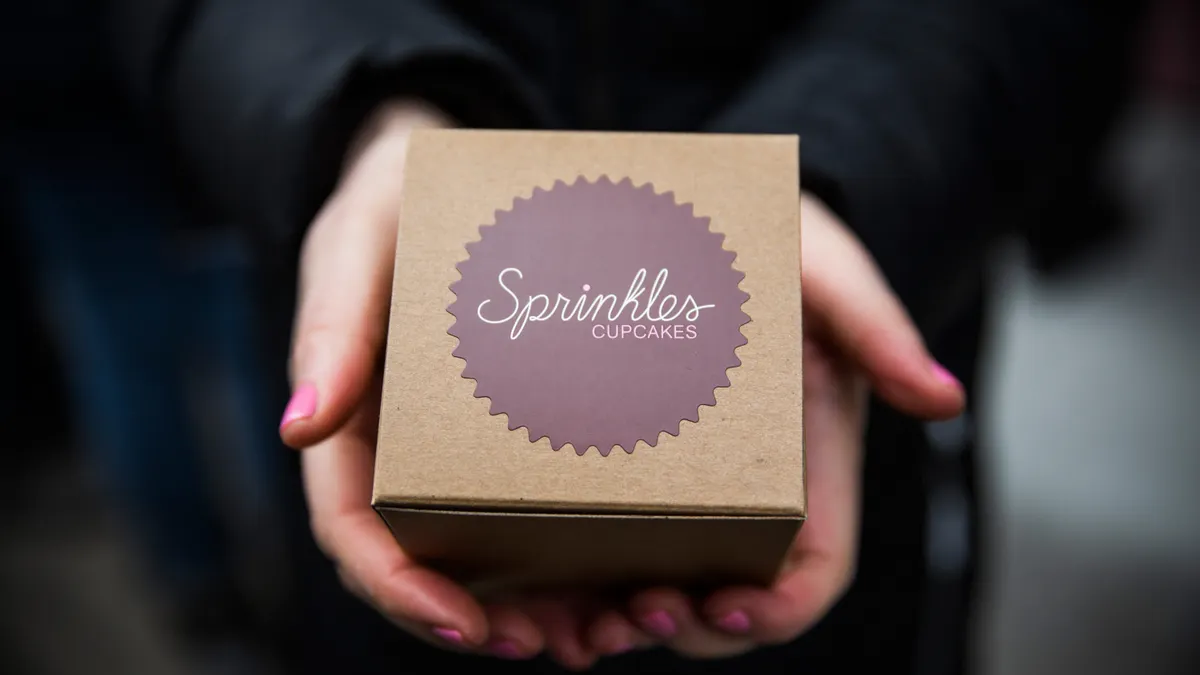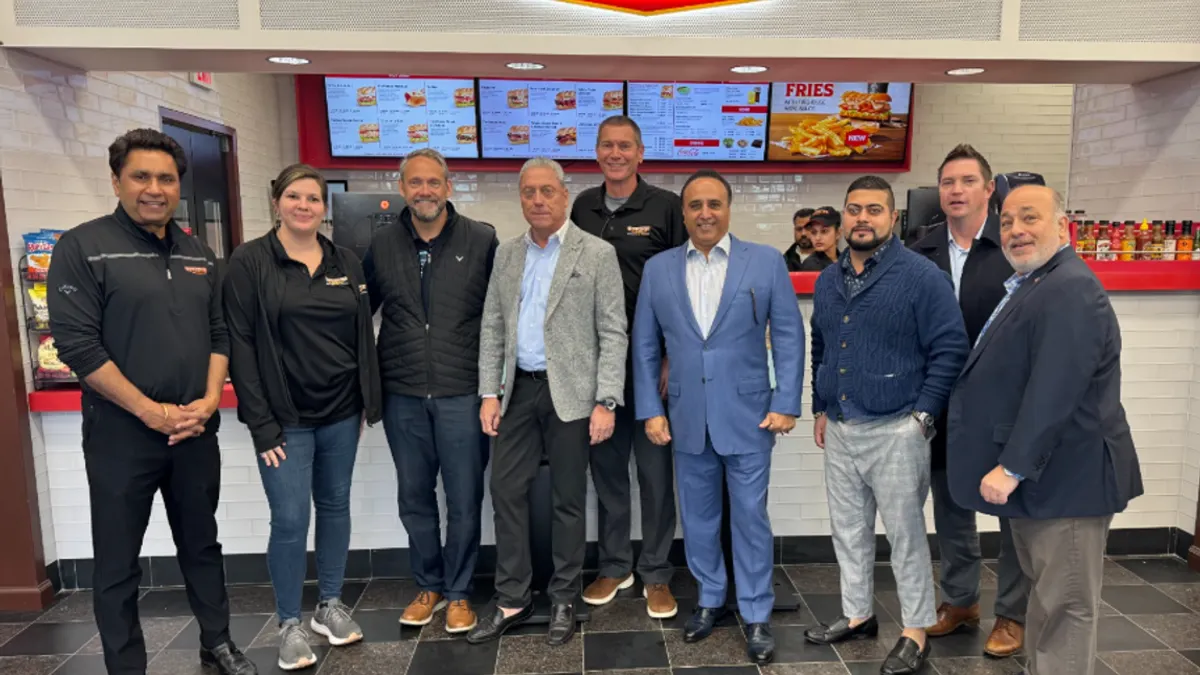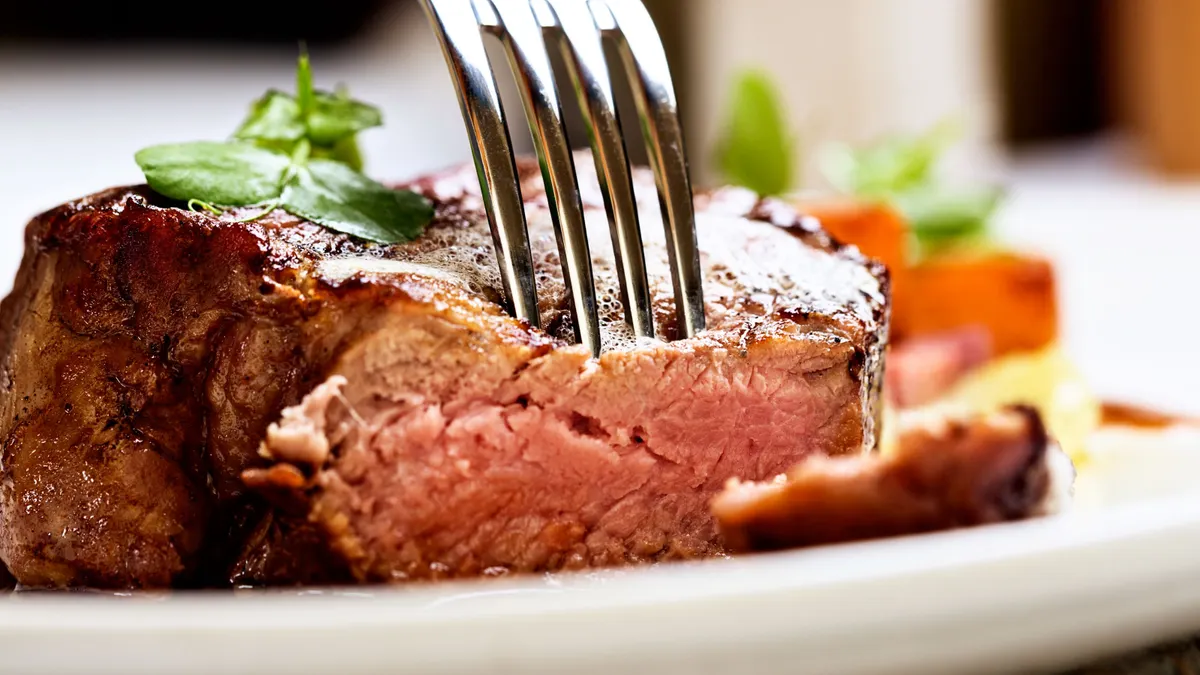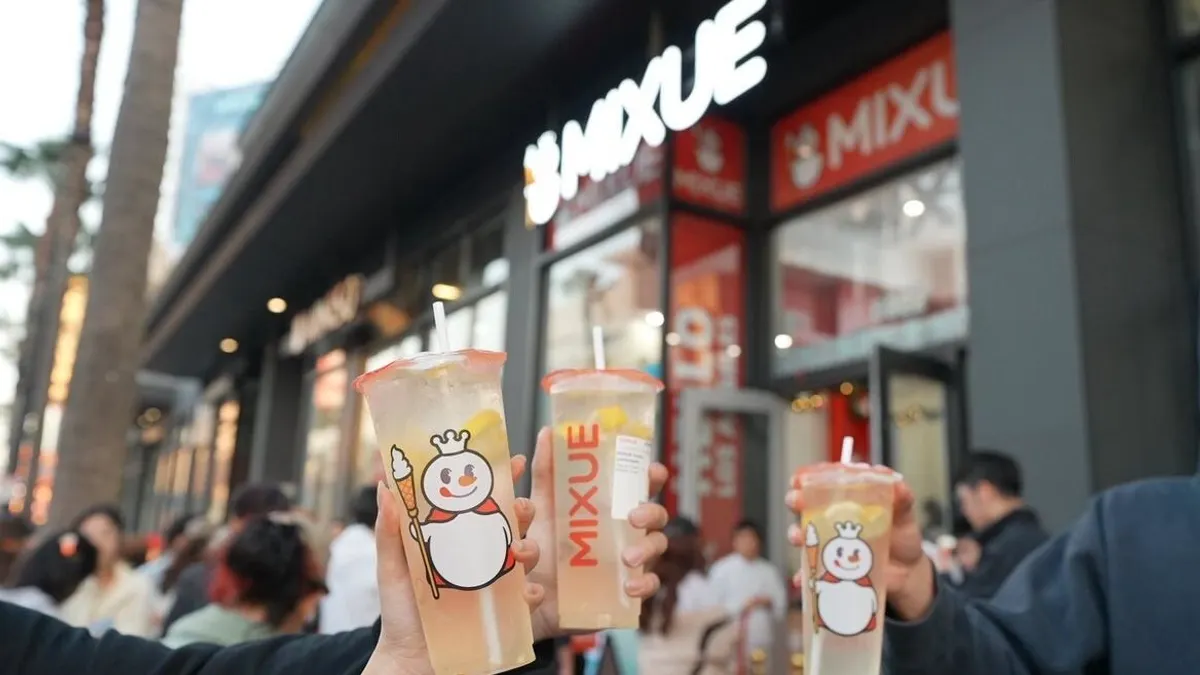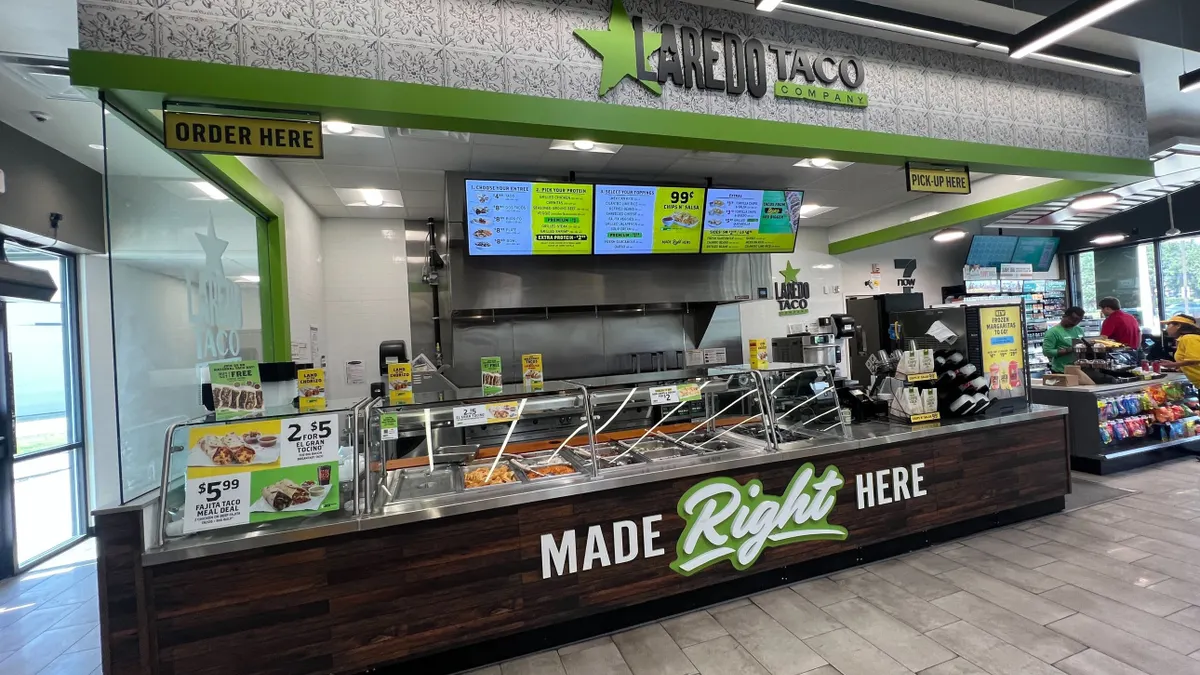Chipotle is looking to make its mark in an increasingly digital QSR landscape, and the stakes are high. Digital sales have grown 23% over the last four years and represent $26.8 billion in restaurant sales, pushing restaurants to quickly deploy new technology — from voice automated ordering to designated areas for grabbing to-go orders — to leverage the channel.
This year, Chipotle has invested heavily in its digital future, deploying second makelines and digital order pickup lanes dubbed Chipotlanes. It also launched a new rewards program and revamped its online catering platform to create a more seamless experience for both customers and crew members.
"Digital engagement is becoming as important to the Chipotle story today as food with integrity has been for the past 15 years," BTIG said in a report emailed to Restaurant Dive. "We believe digital is shaping every decision the company makes, from loyalty to delivery and now to real estate selection."
Executives told investors during an October earnings call the company is "knocking on the door of digital becoming a $1 billion business." Digital has been growing exponentially for the restaurant, generating $256 million during the third quarter, an increase of 87.9% compared to the previous year’s quarter. The first three quarters of the year have generated $725 million in digital sales, meaning the chain could close in on $1 billion by the end of the year if the fourth quarter proves to have $200 million or more in digital sales.
"Customers are increasingly tech savvy. They are increasingly on the go and they have the expectation that the brands that they love come along with them and meet them where they are and make it increasingly easy for them to get what they want and when they want it," Nicole West, Chipotle's VP of digital strategy and product management, told Restaurant Dive.
Chipotle Rewards, which launched in March, has grown to over 7 million members, an average of 1 million new members each month since its launch, and this program still holds a lot of potential.
"For us, it’s just the beginning of how this might impact digital sales moving forward," she said.
But Chipotle is far from the only restaurant bulking up its digital platform — which includes both delivery, catering and pickup orders — to boost sales this year.
Wingstop and Noodles & Company have ramped up digital sales and reported strong growth during the third quarter.
"Customers are increasingly tech savvy. They are increasingly on the go and they have the expectation that the brands that they love come along with them and meet them where they are and make it increasingly easy for them to get what they want and when they want it."

Nicole West
Chipotle's VP of digital strategy and product management
Digital orders made up 36% of Wingstop's orders during the third quarter, increasing over 1,000 basis points year-over-year, CEO Charles Morrison told investors during an October earnings call. The company launched its proprietary, custom-built online ordering site and mobile app at the start of the year, which has already improved the guest experience and led to more conversions for guests who use the customer-facing technology, he said.
Wingstop’s digital transactions are $5 higher than an average ticket, and it believes it can continue to drive digital sales without using discounts or incentives that competitors rely on. The company has been driving more brand awareness through increasing its national advertising spend, which has helped increase the company’s TV campaign and maintain its digital presence, Morrison said. It's brand building message Where Flavor Gets Its Wings has helped build awareness and increased conversions to more occasions, he said.
Noodles & Company increased digital sales 47% during Q3 versus last year and overall off-premise increased 490 basis points to make up 54% of sales, Noodles & Company CEO Dave Boennighausen told investors during a November earnings call. The company launched a new rewards program this year as well as new digital ordering platform that makes it easier for guests to navigate its menu and customize orders, he said.
"Both the rewards program and the new digital ordering experiences significantly reduce friction for our guests, and create a foundation for raising our brand visibility and improving our guest engagement now and in the years to come," Boennighausen said.
Wendy's is also eyeing significant growth in digital, with the expectation that it will make up 10% of its sales by 2024. Its digital sales are up 325% as of the third quarter and make up 2% of the company’s overall U.S. sales, and the chain has plans to launch a loyalty program and expand its ordering capabilities to include voice systems.
With so many other restaurants expanding digital capabilities, Chipotle will face additional competition, but several of its strategies could help it stay on top.
Fixing pain points with second makeline, pickup shelves
Chipotle's digital growth doesn't appear to be slowing down. Its digital sales mix has doubled in just over a year from 9% in Q1 2018 to over 18% as of Q3 2019, according to BTIG's October report. But this dramatic increase didn't happen until the company fixed some pain points that were slowing down the ordering experience and causing pain points for employees.
When digital orders started picking up in recent years, the company realized that digital customers were coming up to the line and creating a second queue to pick up their orders, which created a bottleneck for both digital and in-store customers, West said. Creating a self-service pickup shelf allowed for easier pickups for both delivery partners and to-go customers, instead, she said.
Digital makelines were developed after the company observed how crew members were preparing digital orders, which involved interpreting a paper ticket to fulfill orders, West said. These same crew members were also juggling a busy front line that was being slowed down by digital orders, she said.
Crew members used to dislike fulfilling digital orders as well, but the new second makeline has made the experience easier, she said. Now the orders come in through a digital system and crew members use a line that is separate from the main customer line to fulfill orders that are then placed on pickup shelves.
"Everyone wants to work on the system. It’s fun and easy and fast-paced and they are excited to be part of this portion of business," she said.
Second makelines will also increase capacity and allow for more menu innovation and customization, BTIG said.
The company also took its time when it developed its loyalty program, taking in customer feedback for years to figure out the best way to create a platform that was fun and provided value for both super fans and occasional customers, West said. The program offers 10 points for every $1 a customer spends in restaurant or online with a free entree for every 1,250 points. It also offers extra point days allowing members to earn points more quickly, birthday rewards and free chips and guacamole after the first purchase as a new member.
A rewards program also gives Chipotle the ability to access long-term data on customer behavior to better understand what they want, she said.
"The more we know about our digital customers, the more personalized experience we can deliver for them," West said. "Customers are just expecting increasingly personalized experiences that reduces friction and makes [ordering] more convenient."
Its digital strategy is also impacting the chain in other ways, especially when it comes to Chipotlanes, drive-thru style pickup windows for mobile orders.
"The success that Chipole has enjoyed with digital is helping to reshape the real estate selection process," BTIG said.
Its development process, which means finding locations that can accommodate a pickup window, is slowing down with new openings below its original prediction of 142 this year, executives told investors on an October earnings call. BTIG expects Chipotlanes to generate $3 million in sales once awareness of the feature has been established and expects restaurant level margins to be mid-25% range or higher compared to the rest of the company’s stores, which average margins of about 21%.
"We know that when you can offer Chipotle with less friction meaning it's easier to order, it's easy to stop in and pick up Chipotle without even getting out of your car, that tends to cause our customers ... to get Chipotle even more often," John Hartung, Chipotle's chief financial officer, told investors in October.
While digital makelines and the loyalty reward program are available in all restaurants, Chipotlanes are not, and many restaurants are in in-line spaces and locations that cannot accommodate a drive-thru style pickup window. That means Chipotle needs to find other innovations to engage with digital customers and keep them coming back, West said.
This could include initiatives that let gamers order directly from a video game console or ordering from smart voice automated devices like Alexa, West said. It could also mean in-car ordering so that customers can order on their way to a restaurant or use messaging or chat to order, she said.
Many of these tactics have already been deployed by Domino's, which offers ordering via across these platforms, with the addition of being able to order via emoji, while Wingstop, and Dunkin' offer voice ordering. Starbucks launched voice ordering in China earlier this year. But ordering via voice or chat isn’t the only way Chipotle and many others are trying to engage with more customers.
A future filled with AI
Chipotle will also join the emerging trend of using artificial intelligence to improve the ordering experience while boosting operational efficiency and freeing up employees from doing time-consuming tasks at the same time. That could mean more seamless ordering and a better guest experience, which could further boost digital revenue.
AI has been helping restaurants collect data on customer preference, monitor sales activity to predict future supply chain needs and help with scheduling employees to maximize work flows. TGI Fridays has been using machine learning for guest customization and employee scheduling, among other functions, long before McDonald's bought Dynamic Yield to bring AI to its drive-thru platform.
Chipotle's foray into AI has so far come in the form of voice automation for phone orders, which rolled out across its system this year, West said. So far this has relieved a crew member from taking phone orders so they can focus on in-store customers, she said. Other companies have been testing similar systems as well. Domino’s has been testing a voice ordering assistant, called DOM, to help with phone orders, taking it a step further by using it to transition customers away from phone orders to its online system.
"I think there is a lot of opportunity for us to use AI to bolster what our digital experience is and what our crew members are doing for our customers everyday.

Nicole West
Chipotle's VP of digital strategy and product management
But that may not be the only way Chipotle will use AI.
"I think there is a lot of opportunity for us to use AI to bolster what our digital experience is and what our crew members are doing for our customers everyday," West said.
Customer service could use AI technology to better respond to customer questions or complaints, she said. Chipotle is also considering predictive technologies and potentially connected kitchens that can collect point-of-sale data and other operational information and create predictive analytics and provide crew members with sales expectations, she said. That could really help employees understand things like how much food needs to be prepped, which ingredients to prep during certain times of the day and how to monitor the grill temperature, she said.
There's a lot that we can do with technology to support our crew members in the restaurant and we've really just begun to look into that opportunity," West said. "It's really been an exciting frontier because it's just the beginning and everyone is just starting to understand what is possible and how to bring that to life."






